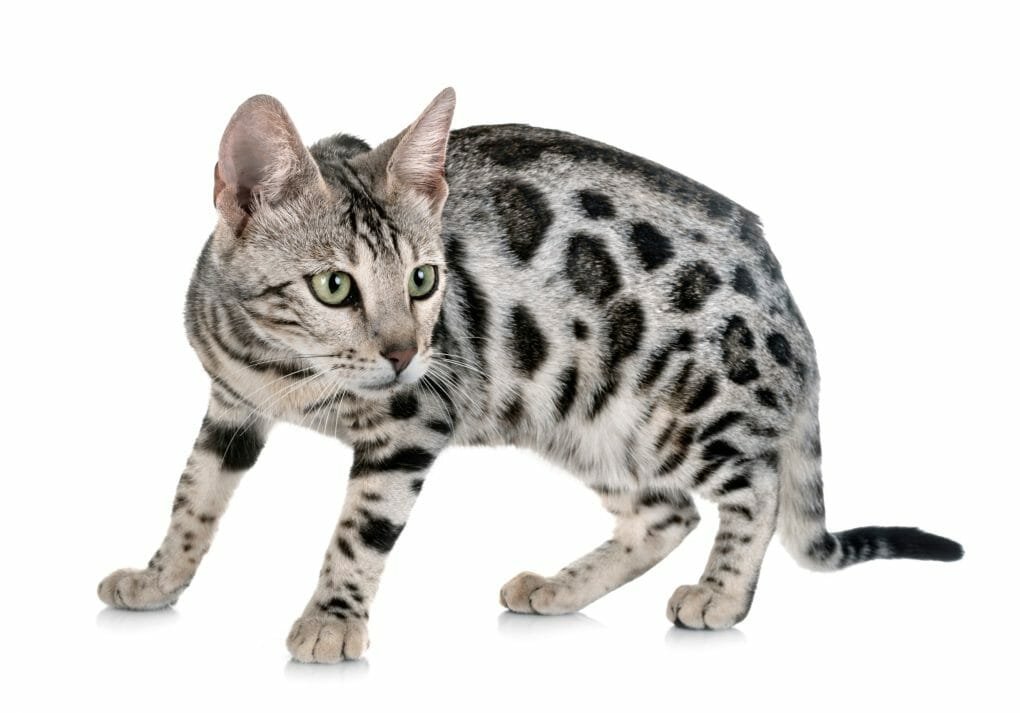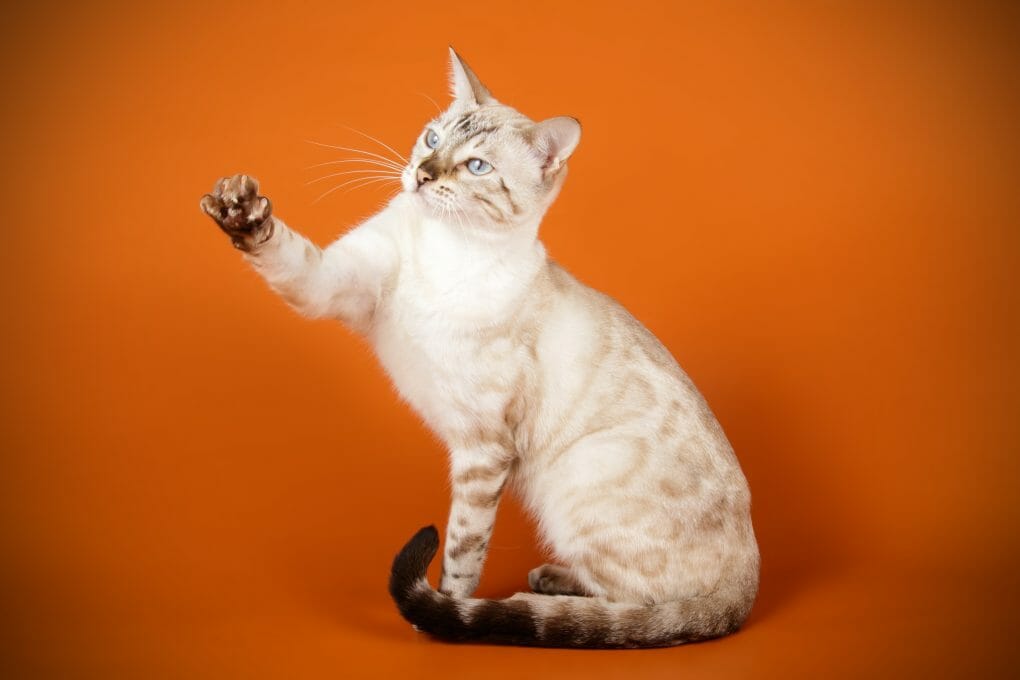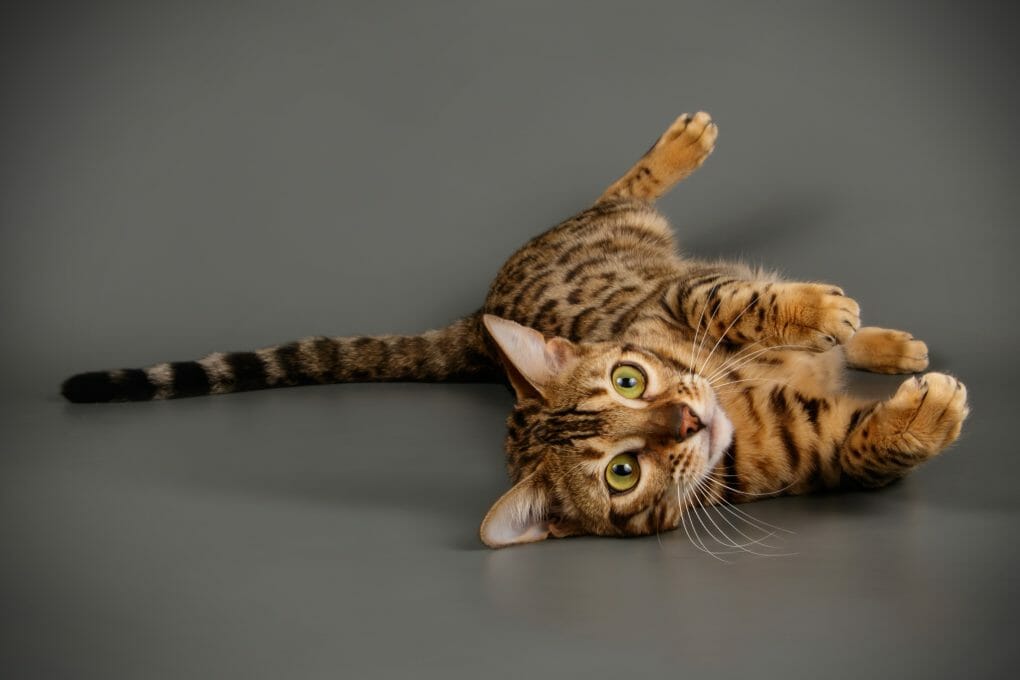What Is the Rarest Bengal Cat Color: A Guide on the Different Colors, Patterns, and Markings of This Feline Breed
Blue is the rarest of all the Bengal cat’s colors. Blue Bengals have a coat color that ranges from pale silver to deep charcoal grey. This color is rare in Bengal cats, resulting from a recessive gene not often found in breeding lines.
The rarity of a Bengal cat’s coat color can depend on several factors, including the specific breeding lines and the prevalence of certain colors within those lines. For example, not all Bengal cat colors are available at every cat breeder. If you’re looking to adopt a Bengal cat, carefully research each color before choosing one.


Table of Contents
Recognized Bengal Cat Colors
Brown
Brown Bengals are often the color of choice for cat breeders and lovers. They can fetch quite a high price on the market despite being expected. They make great pets because they are gentle and easy to handle – perfect for families with children. Brown Bengals usually have a longer coat than other colors, making them quite heavy when wet.
Silver
The silver Bengal cat is both rare and beautiful. With only a few born each year, chances of finding one as a pet are low. But if you do find one – don’t hesitate to get it! Silver Bengal cats usually have light brown fur with patches of white hair on their head, chest, and back. They are very active and playful – perfect family pets!
Snow
Snow Bengals have white or cream-colored coats and may have blue or green eyes. Their fur makes them look almost white – something that stands out in an environment full of browns and tans. Due to this, they are incredibly sought-after.
Unfortunately, snow Bengals are rare, and you may not be able to get your hands on one.
Non-recognized Bengal Cat Colors


The breeders or cat registries have yet to recognize several rare Bengal cat colors. So if you think your cat may be one of these rare color variants, a vet must check them out ASAP!
Charcoal
You’ll want to check out charcoal Bengals if you’re a cat lover. These beautiful cats are rare and have several variations that make them stand out.
Blue
Blue Bengal cats are becoming increasingly rare as time goes on. The stripes and spots of this breed come in shades of blue but are usually quite grayish and strikingly beautiful.
Sadly, their rarity means that you’re unlikely to find one anywhere near where you live – except for maybe a few lucky individuals.
Black or Melanistic
Melanistic or black Bengals are incredibly rare and often mistaken for a different color variety of Bengal cats. Some organizations study these cats to learn more about their genetics, and conservation efforts are underway.
Lilac
Lilac Bengals have a pale, pinkish-gray coat similar to the fur of a lilac flower. This color is rare, resulting from a recessive gene not often found in breeding lines. Lilac Bengals are domestic cats with a unique coat color, a pale, silver-gray color with a pinkish or lilac hue. This coat color is caused by a genetic mutation that affects the production of pigment in the hair.
Bengal cats are known for their energetic and playful personalities and are often described as more like dogs than cats. They are intelligent and love to explore and play, making them a popular choice as pets.
Lilac Bengals are generally considered a rare and sought-after color variation within the Bengal breed. If you are interested in getting a Lilac Bengal cat, it is essential to research and chooses a reputable breeder who follows responsible breeding practices. This will help ensure that you get a healthy, well-socialized kitten.
Bengal Cat Patterns
The Bengal cat is an excellent option if you’re looking for a unique cat breed. Not only do they have beautiful fur, but their patterns are very different and unique.
Spotted
If you’re looking for a truly unique cat, the spotted Bengal might be just what you’re looking for! Not only is this cat pattern beautiful, but its price tags reflect that. They average fetch around $1,500 to $2,000 on the market.
Moreover, because of their popularity among breeders and enthusiasts alike, finding a breeder with one available can take time and effort. However, if you are lucky enough to stumble upon one while searching online or in person – don’t hesitate! They make great companion pets as well as stunning show cats.
Marbled
If you’re searching for a cat that is one of a kind, then consider getting one with a marbled coat. Marbled Bengals are rare, and as such, they can be pretty expensive when found in good condition. However, if you want to add this color to your Bengal cat’s gene pool, it’s best to get them from a reputable breeder or someone who has done this before many times.
Sparbled
If you’re looking for a truly unique cat, you should add the Sparbled Bengal to your list of potentials. This pattern is infrequent and can only be found in Bengals that are of exceptional quality.
Apart from its beautiful coat, the combination of stripes and spots on its coat makes a sparbled Bengal different from other Bengals. With this variety so hard to come by, those who have them consider themselves lucky as they get to breed genuine specimens.
Bengal Cat Markings


Rosettes
Rosettes are one of the most distinctive features of the Bengal cat breed and can be found all over their fur, making them a visual delight for cat lovers everywhere.
Bengals with rosettes, brindle, and ticking markings are considered purebreds and make up a small percentage of all Bengals, so it’s essential to research before making a purchase! Not only will this help you avoid getting ripped off, but you’ll also be able to learn more about what specific markings indicate within the breed.
Tummy Spots
Tummy spots are characteristic of the Bengal cat and can vary in color. They are usually cream or light brown and may have darker markings around them. These markings will help to identify the cat as belonging to a particular family or group of cats.
Striped Tail
What’s common among all Bengal cats is their striped tail. Bengal cat markings are varied and exciting – from the stripes down to the tipping.
